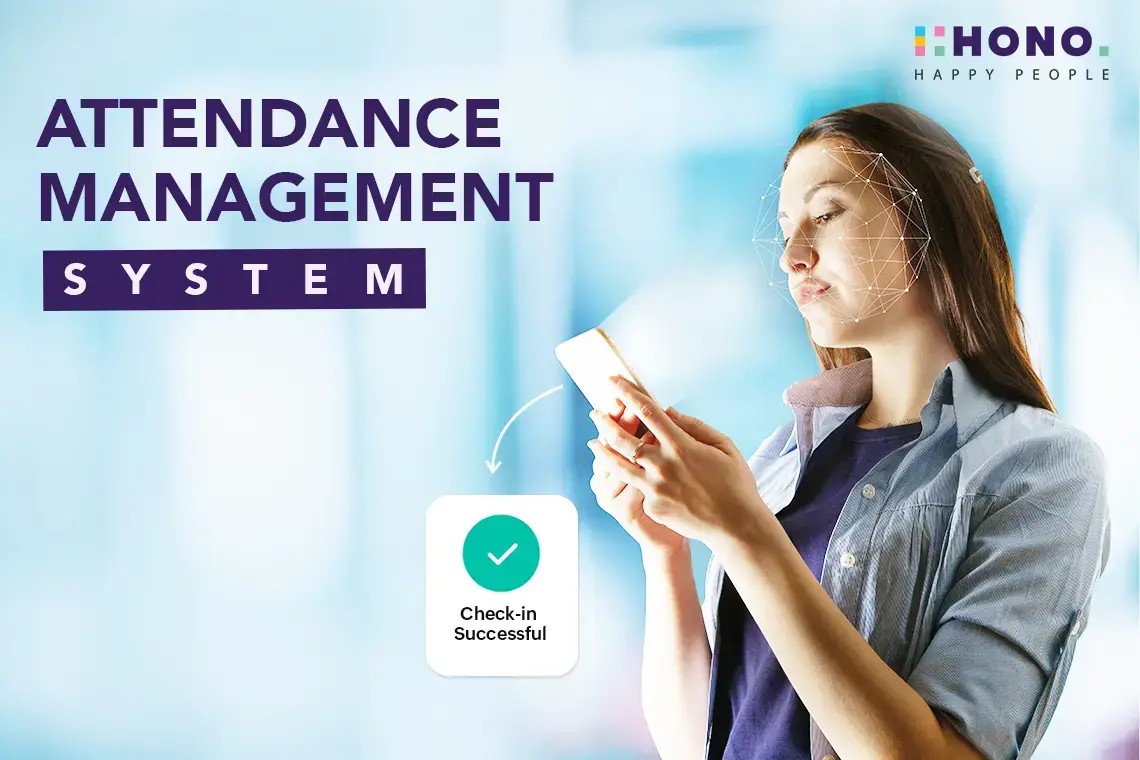Challenges Of Performance Management & How to Overcome Them
Here are the major challenges in the process of evaluating an accurate and fair performance appraisal.
1. Lack of Clear Goals
Before we jump on the performance evaluations, it is imperative to set key responsibility area (KRA) for each employee. If an organization does not setup a KRA, their employees might be unclear on the expectations and could possibly not deliver what’s expected.
How to tackle?
Deal it the SMART way! Try setting up Specific, Measurable, Achievable, Relevant and Time-bound (SMART) goals. Listed below is a brief on how each component looks like-
- Specific- Set clear goals which are specific to a particular set of tasks. This helps in avoiding duplicity, confusion and errors.
- Measurable- Make sure the goals have a metric to measure, this brings clarity and accuracy in performance evaluation, giving a better view of employee’s performance graph.
- Achievable- Nothing which is unachievable or too unrealistic should be added in the KRA. Too much can be overwhelming and become a burden for the employee.
- Relevant- Goals should be in sync with the organization’s growth and employee’s work experience/profile. Nothing beyond this should be considered as a part of the process.
- Time-bound- Keeping an attainable deadline is important as tasks without a set timeline to complete might be taken lightly or even missed, affecting the work competition deadlines later.
2. Fair and Periodic Feedback
In many organizations, feedback is often conduced in longer durations such as 15 months of employment completion or even 2 years after joining. These can make employees feel unfair and become a possible reason of employee churning.
How to tackle?
Organizations can switch to the below mentioned alternatives to make their review or performance appraisal cycles fair and frequent-
- Schedule and plan- Keep your review cycles quarterly or twice a year, this can help in taking a regular and continuous feedback on employee performance, also encourages employees to work harder for better grades/percentages.
- Detailed feedback- It is equally important for managers/peers to give detailed feedback, this can help attach an explanation on why the number of scores has been given, alongside, it helps in increasing transparency and fair attitude amongst the employee-employer.
- Encourage two-way communication- While managers or peers are giving their scores and feedback for the employee, it's important that the employee also has a right to speak their thoughts. The communication should be a two-way street where both the parties are equally speaking and informing about their choice of scores/feedback.
- Maintain Records- All the feedback given must be recorded or documented to ensure a fair practice to be implemented across the organization. Mostly the feedback is taken through a common HRMS platform which records every component. However, some organizations prefer taking feedback and score via email or a common document file shared with employee and leadership.
3. Evaluations Biasness
Encouraging biasness across the organization can be fatal for organizational growth and often brings inaccuracy at work. In most cases, the biasness occurs when employee feedback is based on individual opinion and not a fair and transparent approach.
How to tackle?
To sort this, there are a few measures which can be taken, below listed strategies can help-
- Choose a 360-degree feedback- This is the most transparent and comprehensive feedback method, involving fetching the feedback from every touchpoint such as subordinates, managers and even peers. This helps in getting different perspectives, better overview and a way more accurate picture of an employee’s performance.
- One Evaluation Criteria - Make sure you have a standard employee performance evaluation criterion which can stand out even when there are multiple opinions about one employee. It should be based on a overall and complete feedback system rather than someone’s individual judgement.
4. Legacy Tools
There are organizations which are still following the traditional/legacy approach such as manual paperwork. However, using the outdated tools might also feel frustrating. It’s always better to opt for newer technologies which are more flexible, cost efficient and bring better possibilities to the table. Listed below are some tips to deal with the challenge-
How to tackle?
- AI enabled tools- With multiple HRMS platforms in the race, it can be a tricky to find which one is the best. However, with the advent of AI-powered HRMS, businesses are prioritizing the ones with AI capabilities. HONO is one the leading platforms providing a fruitful combination of tech, intelligence and the much talked about- Artificial Intelligence.
- Effective Management Tools- Make sure the HRMS you choose, have the right management tools, promotes smoother operations and have capabilities that can manage real-time performance tracking. A fair employee performance evaluation not only benefits the employee but helps the organization to setup a transparent and effective structure for the future.
5. Lack of Employee Engagement
Another reason why performance management isn’t successful in some organizations is lack of employee engagement. While employees feel that adding grades, or rating themselves is just a regular process, the employers do not get a fair idea of the exact situation. Here are some possible options to deal with the issue
How to tackle?
- Create Awareness- Organizations can create awareness amongst the employees about the rating criteria, how it can help them for their career growth, what could be the possible benefits from a fair and transparent feedback that can help employees in working on their weakness and so much more. Once employees are aware, they might get interested in grading/rating themselves and not consider it as a monotonous task.
- Mutually Agreed KRAs- Employees might be disinterested only when they are unaware about their own KRAs or, the mentioned scope of work doesn’t resonate with their regular assigned tasks. Try to work out and finalize the tasks which are mutually agreed, this will make the employees feel included and they would invest their time wisely in rating oneself and peers/managers.
6. Poor Communication
Communication gap is one of the leading reasons which can create a negative impression on the employees. Misunderstandings or unmet expectations can create a vacuum which could lead to distorted team alignment, unmet goals, negative feedback and so on. There are ways to deal with the situation, listed below are some options which could help
How to tackle?
- Regular Communication- Everything starts with the right communication. Initiate setting up regular meetings, weekly catchups or maybe recurring standup calls which can be highly effective in keeping everyone well informed and letting the communication channel be clear and transparent.
- Schedule Periodic One-to-Ones- Sometimes when the consolidates team meetings are not enough to solve the regular challenges, it becomes imperative to have private conversations alongside. Here, the managers can conduct one-to-one meets which can be periodic/ monthly/ half yearly etc., this will help create clear communication and effective workflow between the stakeholders and the subordinates.
7. Integration with Other HR Processes
It is not important to keep performance management aloof, instead, it is an integral part of the overall HR process/operations. Standalone approach might not be the best choice here.
How to tackle?
To make sure the challenges of performance appraisal is taken care of, try the listed remedies-
- Make the Right Combination- To maximize the impact of performance management, integrated it with other HR functions including talent acquisition, learning and development, succession planning etc., this will create an effective long-term strategy and support the employee in their career growth. Alongside, it can also benefit the company by providing better resource utilization with succession planning.
- Use Smart Analytics- With the tech-empowered HRMS like HONO, you can make use of smart analytics that can help the HR make smarter and fruitful decisions.
8. Dependency on Metrics
Many organizations are heavily dependent on numbers which can make performance management look like a mathematical jargon. This approach can kill the employee confidence and hide their potential to do better maybe in different areas of work. Moreover, quantitative metrics cannot define the qualitative efforts.
How to tackle?
To make the proportion look normal, it is imperative to blend the qualitative and quantitate metrics. Following are some options to choose from
- Self-Assessments- Many organizations solemnly rely on manager’s reviews rather than focusing on a 360 degrees approach. Make sure you do not repeat the similar mistake and incorporate self-assessment for a fair and effective review.
- Peer Reviews- Consider having multiple perspectives rather than having only the seniors review subordinates. Peer review is one of the best approaches to carry forward as it denotes how the employee is performing with managers, peers, juniors etc.
Wrapping Up
Performance management has different aspects and is highly dynamic in nature. To ensure a smooth employee-employer relationship, it's imperative to study every facet of the employee journey and implement what’s best for your internal resources and your organization’s long-tern goals.
Confused on which HCM solution will be best suited for your organization? Try HONO, an AI-powered, multi-lingual, multi-country payroll human resource management solution which can help you sail smooth with your regular HR operations and get you the best solution for succession planning, paperless onboarding, smart absenteeism management, 360-degree performance management etc.
Ready to revamp? Drop a line and we will help you understand how HONO could be the right solution.








.webp)
.jpg)
-1.webp)